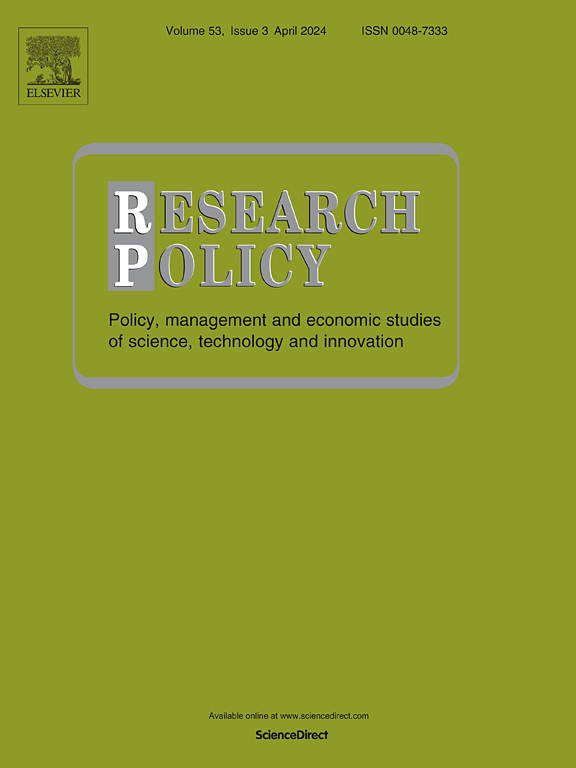自主发明,问题制定和创造性成果
IF 8
1区 管理学
Q1 MANAGEMENT
引用次数: 0
摘要
研发团队先前对创造力的研究强调,决定如何解决给定问题的自主性(操作自主性)对创造力有积极影响。然而,研发团队也可以自主选择要解决的问题(战略自主),其影响仍未得到充分探索。本研究探讨策略自主如何影响问题表征的认知过程,进而影响研发团队的发明创造力。利用由公司研发专业人员对发明披露中的问题描述组成的独特数据集,以及有关发明是否自主发起的信息,我们发现,对于自主发明,或者研发团队发挥战略自主性来识别问题的发明,问题表示的复杂性低于由管理人员识别并分配问题的自上而下的发明。我们进一步发现,领域专业知识和团队成员的多项目参与调节了这种关系,而较低的问题表示复杂性反过来又与较低的发明创造力相关。本研究揭示了自主性负向影响创造力的新机制,对创造力、创新和组织设计的研究有一定的贡献。本文章由计算机程序翻译,如有差异,请以英文原文为准。
Autonomous inventions, problem formulation, and inventive outcomes
Prior research on creativity by R&D teams has highlighted that autonomy in deciding how to solve a given problem (operational autonomy) positively influences creativity. However, R&D teams may also have autonomy in choosing which problems to address (strategic autonomy), the effects of which remain underexplored. This study examines how strategic autonomy influences the cognitive process of problem representation and in turn, the creativity of inventions produced by R&D teams. Leveraging a unique dataset consisting of descriptions of problems in invention disclosures by R&D professionals of a firm, along with information on whether an invention was autonomously initiated, we find that problem representation complexity is lower for autonomous inventions, or inventions for which R&D teams exert strategic autonomy to identify problems themselves, than top-down inventions for which problems are identified and assigned to them by managers. We further find that domain expertise and multi-project engagement of team members moderate this relationship, and that lower problem representation complexity in turn relates to lower creativity of inventions. By uncovering a novel mechanism through which autonomy negatively affects creativity, this study contributes to the literatures on creativity, innovation, and organizational design.
求助全文
通过发布文献求助,成功后即可免费获取论文全文。
去求助
来源期刊

Research Policy
MANAGEMENT-
CiteScore
12.80
自引率
6.90%
发文量
182
期刊介绍:
Research Policy (RP) articles explore the interaction between innovation, technology, or research, and economic, social, political, and organizational processes, both empirically and theoretically. All RP papers are expected to provide insights with implications for policy or management.
Research Policy (RP) is a multidisciplinary journal focused on analyzing, understanding, and effectively addressing the challenges posed by innovation, technology, R&D, and science. This includes activities related to knowledge creation, diffusion, acquisition, and exploitation in the form of new or improved products, processes, or services, across economic, policy, management, organizational, and environmental dimensions.
 求助内容:
求助内容: 应助结果提醒方式:
应助结果提醒方式:


